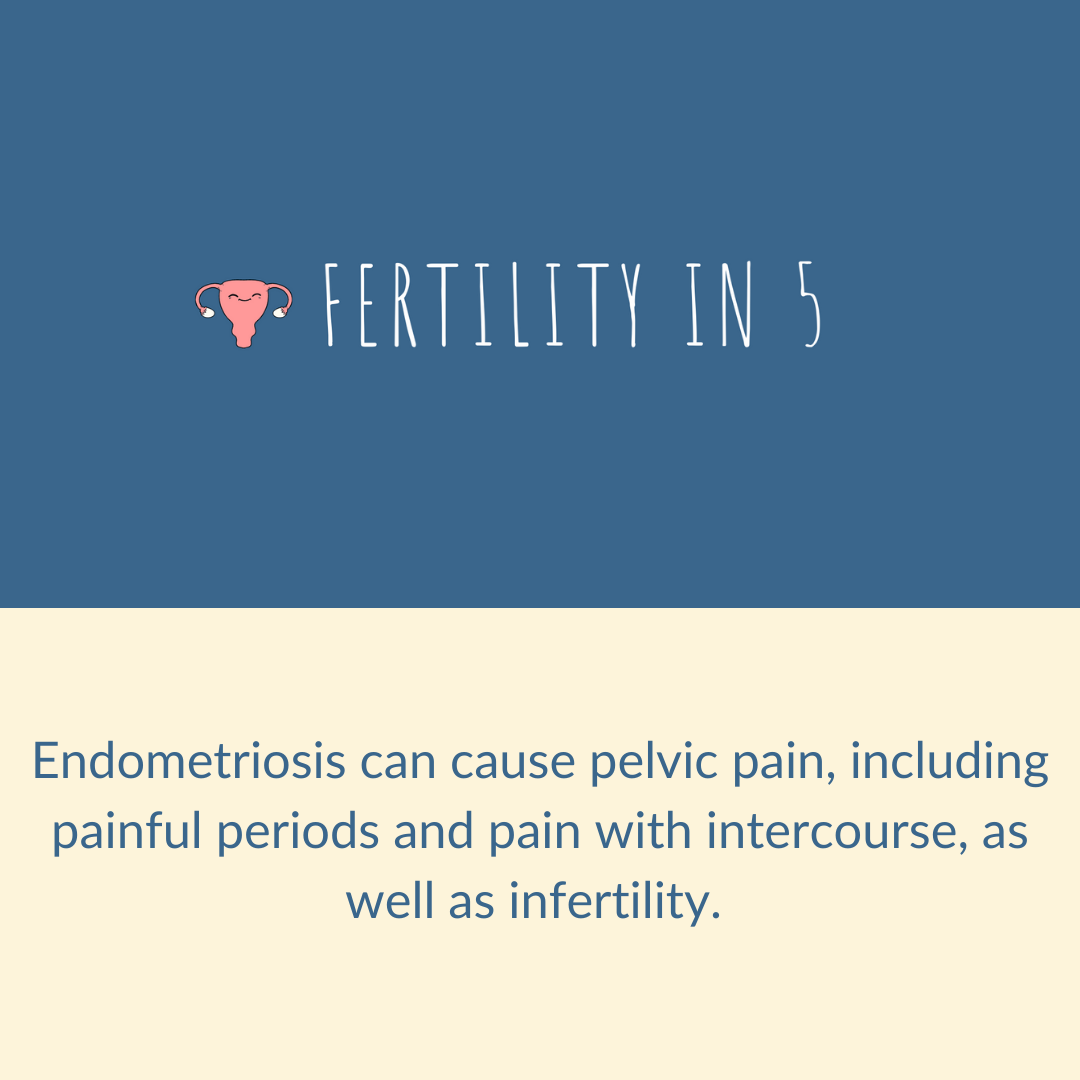Why do you need to know about endometriosis?
According to one study, patients saw an average of 7 doctors before they received a diagnosis of endometriosis!
People (including doctors) tend to dismiss cramping and pain with periods, thinking, “Doesn’t everybody go through this?” The answer is, yes and no. Yes, many people have at least mild cramping with periods, and that doesn’t necessarily mean you have endometriosis. But no, severe pain is not normal - i.e. the kind of pain that keeps you in bed or on the couch during your period, causes nausea and vomiting, or makes you change up your routine because the pain limits your usual activities. (It’s important to note here that pain doesn’t always correlate with endometriosis severity, meaning that some people can have moderate or severe endometriosis without having a lot of pain, and some people with mild endometriosis can have severe pain).
What are some other signs and symptoms? Pelvic pain that starts before your period starts, or chronic pelvic pain; pain with intercourse; pain with bowel movements (especially during your period); and infertility.
If you do have severe pain that doesn’t respond to over-the-counter pain relievers, or if you have other symptoms that concern you, talk to your doctor. Of course, endometriosis is not always the culprit — there are plenty of other conditions that can cause pelvic pain, including uterine fibroids, irritable bowel syndrome, and many others.
What exactly is endo and what causes it?
Endometriosis is a condition that can cause painful periods, pain with intercourse, and infertility. But what’s actually going on here? The type of cells that normally line the uterus end up elsewhere, usually in the pelvis and abdomen, and a disordered immune response to these cells causes inflammation and scarring - instead of simply absorbing these cells and getting rid of them, your body’s immune cells undergo an inflammatory response.
Meanwhile, the out-of-place endometrial cells, which have now become endometriosis implants, ratchet up their estrogen production and become resistant to progesterone, a sort of self-perpetuating process.
There are several theories about how these endometrial cells end up outside the uterus, which I won’t bore you with, but here’s a fact worth noting: genetics does play a role. If you have a first-degree relative (mom, sister) with endometriosis, your risk of developing endo is 7-10x higher.
How do you diagnose endo?
Technically, the only way to diagnose endometriosis is with a surgery called laparoscopy, where we place a camera through small incisions in your abdomen to look inside at the pelvic organs.
Ultrasound is usually ordered to check out the pelvic organs to see if there’s an obvious reason for the pain. Sometimes an ultrasound can reveal a collection of endometriosis on the ovary (a cyst called an endometrioma). However, endometriosis usually causes numerous small implants that can’t be detected on ultrasound. In other words, a normal ultrasound does not rule out endometriosis. Small implants can typically be seen only with a laparoscopy surgery.
But you don’t necessarily need surgery. Most of the time, doctors will try birth control pills or progesterone pills (or even a shot like Depo-Provera) first to “suppress” endometriosis. Birth control pills are the most common first-line treatment for dysmenorrhea (painful periods) and/or suspected endometriosis. Birth control pills can be taken the traditional way — where you take the placebo pills for a week each month and have a period — or continuously, skipping the placebo week so that you don’t have periods.
If these first-line treatments don’t work, or if they used to work well for you but the pain has returned or worsened, then we usually consider surgery.
What treatment options are available?
Birth control pills or other hormonal treatments (such as the contraceptive ring, progesterone pills, Depo-Provera, etc.) are considered first-line. If those fail, there are certain FDA-approved treatments for endometriosis such as leuprolide (Lupron) injections or elagolix, a daily oral medication. However, these meds can only be taken for a limited time (1-2 years depending on the medication and dose), because with longer-term use, the low estrogen levels they induce can affect your bone health. Another oral medication, letrozole, is often used “off-label” (not FDA approved for this particular condition) if other medications don’t work or aren’t tolerated because of side effects.
A progesterone-releasing IUD is another good option for endometriosis pain, especially for patients who have had side effects with other medications/treatments.
For patients with severe, chronic pelvic pain, treatment may involve a number of other approaches too, from acupuncture to pelvic floor physical therapy to certain pain medications that target nerve-related pain.
Endometriosis and fertility
Endometriosis can affect fertility through a couple of mechanisms. First of all, the chronic cycle of inflammation involved in endometriosis can lead to scarring and fallopian tube blockage, preventing the egg and sperm from getting together or preventing the embryo from making its way back up the tube (where conception occurs) into the uterus where it implants to form a normal pregnancy.
Other than causing tubal blockage, endometriosis is thought to affect egg quality because of chronic inflammation. Furthermore, if you need surgery to remove an endometrioma cyst, this can lead to a lower egg count.
If you’re trying to conceive and you have a history of endometriosis, you should talk with your OB/GYN doctor about it since this is a risk factor for infertility.












